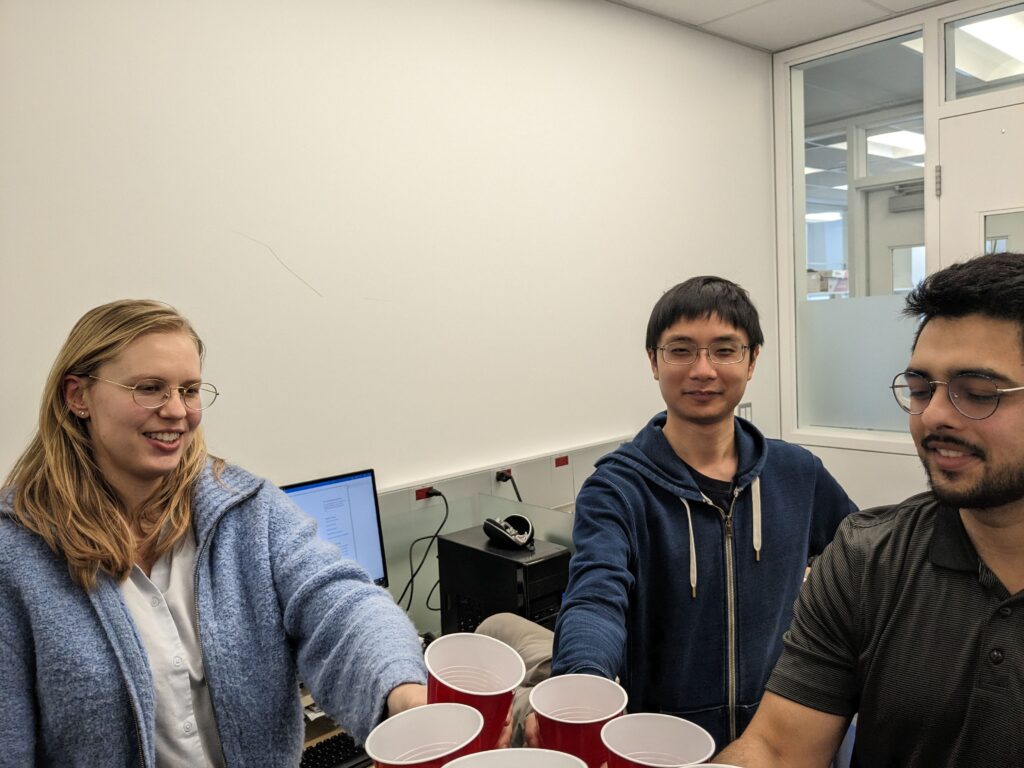Design and Investigation of Clean Energy Materials:
From Stable Perovskites to Economical Catalysts for Oxygen Evolution Reaction

Design and Investigation of Clean Energy Materials:
From Stable Perovskites to Economical Catalysts for Oxygen Evolution Reaction


Each year, Clarivate™ identifies the world’s most influential researchers ─ the select few who have been most frequently cited by their peers over the last decade. In 2020, fewer than 6,200, or about 0.1%, of the world’s researchers, in 21 research fields and across multiple fields, have earned this exclusive distinction.
https://recognition.webofscience.com/awards/highly-cited/2020/
We are proud to be a part of this academia-industry collaboration, working on a high throughput design and synthesis of new materials for a range of applications: catalysis for water splitting and CO2 conversion, and LEDs.
Welcoming our fresh PhD student Milad, and a cohort of undergraduate researchers, Abhishek, Tony, Ihor, Usama, Akshay, Dave. Shadi is also returning to our group as a postdoc!
In collaboration with Prof. Makhsud Saidaminov from the University of Victoria we are starting a new NFRF project targeting the synthesis of new solution-processed semiconductors.
Our initial goal is to improve the stability of fully-inorganic Pb-based perovskites for applications in solar cells and X-ray detectors. The next milestone is discovering new Pb-free perovskite-like materials.
Welcoming a visiting PhD student, Pimsuda, who will lead this project!
Congratulations, Kamal!
ACS Materials Letters, 2020, just accepted manuscript.
The oxygen evolution capabilities of a manganese metal-organic framework (MOF) are demonstrated in acid (pH 1.3) for the first time. The MOF/carbon black composite significantly outperforms MnO2, a known non-noble acidic OER catalyst, exhibiting overpotentials of 539 mV and 764 mV (vs. 715 mV and 898 mV for MnO2) for a current density of 10 mA/cm2 and 50 mA/cm2 respectively.
Machine Learning Accelerates Discovery of Optimal Colloidal Quantum Dot Synthesis
In this work, we applied Bayesian optimization methods to facilitate the search in a multi-dimensional parameter space of quantum dot synthesis and achieved the optimal results in a smaller number of experimental trials compared to conventional methods (random search, grid search, or gradient descent).
Electronic traps are the primary factor stifling the performance of quantum-dot (QD) solar cells to nearly half their theoretical potential. Yet, the exact origin of these traps remains largely unknown, making it difficult to address the problem. In the inaugural issue of Matter, Gilmore et al. employ advanced transient spectroscopy to reveal that QD dimerization can be as detrimental as unpassivated surface states in QD films.
To find out more about the relationship between squeezing elephants into rooms and the performance of optoelectronic devices. Read our paper here.
Tiange’s work on CO2 Electroreduction from Carbonate Electrolyte is now online!
The process of CO2 valorization – from capture of CO2 to its electrochemical upgrade – requires significant inputs in each of the capture, upgrade, and separation steps. Here we report an electrolyzer that upgrades carbonate electrolyte from CO2 capture solution to syngas, achieving 100% carbon utilization across the system. A bipolar membrane is used to produce proton in situ to facilitate CO2 release at the membrane:catalyst interface from the carbonate solution. Using an Ag catalyst, we generate syngas at a 3:1 H2:CO ratio, and the product is not diluted by CO2 at the gas outlet; we generate this pure syngas product stream at a current density of 150 mA/cm2 and an energy efficiency of 35%. The carbonate-to-syngas system is stable under a continuous 145 h of catalytic operation. The work demonstrates the benefits of coupling CO2 electrolysis with a CO2 capture electrolyte on the path to practicable CO2 conversion technologies.
Read the news about the article on Phys.org.